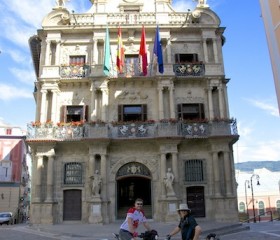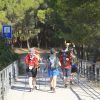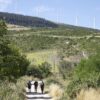Accommodation in Spain runs the full gamut. From dormitory style albergues all the way through to plush historical paradors. Of course your budget will be a factor in determining which style you will use, but it’s possible to use a mixture to really get a taste for what is on offer. Here is a description of each type of accommodation.
ALBERGUES
This form of accommodation is the more traditional way of walking the Camino. In bygone days, pilgrims couldn’t afford to pay for hotels or the like and relied on the generosity of mostly church run hostels that provided bed and shelter for the devout walker.
There are several types of albergues. There’s privately run ones that can also accommodate the general public if they wish. Many of these close over the winter period. There’s also conglomerate albergues that are run by a group, right through to municipal albergues that are state run, usually the cheapest, and are mostly open year round. These are run by volunteers.
Advantages to staying in albergues is that they are cheap, often have kitchens so you can cook your own meals, and have a very communal feel to them. Disadvantages are many including, but not limited to, having to share cramped quarters with many, sometimes hundreds, of other pilgrims, being kept awake at night by snorers, being woken by early risers, and bedbugs!
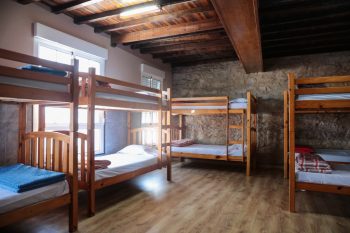
Typical albergue sleeping quarters
Traditionalists will tell you that you need to stay in albergues to experience a true Camino, but everyone walks their own Camino and having a comfortable place to sleep at night doesn’t stop you from having a life changing Camino experience.
HOTELS
Like any country, Spain has a full range of hotels that range from the very plush right through to the extremely ordinary. Booking with a tour company who know the best hotels can help prevent this, but if you’re booking for yourself do your due diligence when researching potential places to stay.
Pros for hotels are that you have your own private room, can possibly be cheap depending on the standard, and you can usually find one in most towns that is nice and central. Cons are that they can be very hit and miss as far as standards go.
CASA RURALES
To experience traditional Spanish living, without the discomforts, these are a wonderful alternative to albergues. Usually privately run, casa rurales are mostly quaint, smaller establishments that could be a renovated farmhouse or historical building. Most will offer food options, often as a hearty communal meal with fellow pilgrims and even the family who run it. The buildings themselves are usually very charismatic, with stone walls and exposed beams.
Pros for this type of accommodation are plentiful. Wonderful hospitality, cosy comfortable private rooms and have a communal feel to them. Of course there’s always exceptions to any rule but this is predominantly accurate. The cos are few. Obviously the wil be a bit more expensive (although can still be very reasonably priced), with the only other possible drawback being they’re not always right in town. Although this is often seen as a pro for many people who love the rural, rustic settings.
PARADORS
At the top of the tree we have paradors. Often restored historical buildings like hospitals or monasteries, they are usually 4-5 star with lots of ambience. The pros are pretty obvious, as is the cons being the expense of them. However, for the standard that they are, many of them are quite reasonably priced and well worth at least one splurge on your Camino!
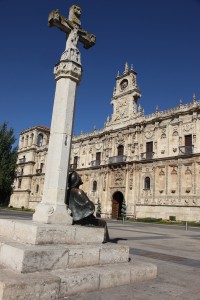
The parador in Leon
Other possibilities may include camping but this is illegal apart from in campgrounds which are surprisingly expensive for what they are, or you may be lucky enough to be approached by a local offering a bed in their house for minimal expense. These types of experiences can often be a real highlight of any Camino.
Whichever accommodation type you settle on, rest assured that the communal spirit of the Camino won’t be lost as you encounter many fellow pilgrims while walking with group dinners easily organised once you arrive at your day’s destination.




